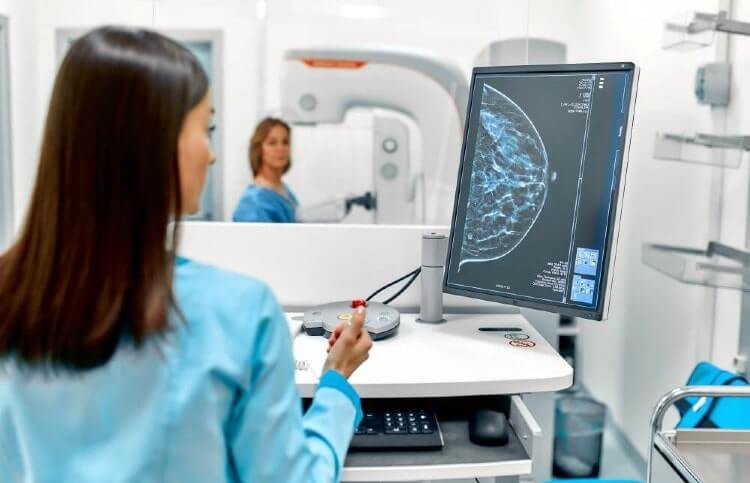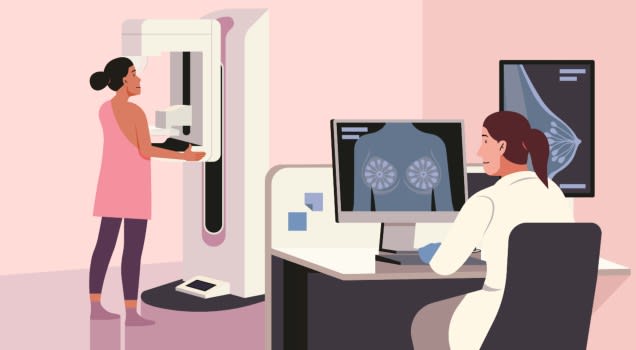What does preventative health look like during and after pregnancy? A daily prenatal vitamin, nutritious eating, and regular exercise are all keys to staying healthy before and after having a baby. So is caring for your pelvic floor.
As Stamford Health expands its outpatient pelvic health physical therapy (PT) services to additional locations in Norwalk and Stamford, we want to explain how pelvic health PT can improve not only your pregnancy and postpartum experience, but also your overall health.
Since the organs that the pelvic floor support are all connected, symptoms of pelvic floor dysfunction commonly overlap. If your pelvic floor is weak, tense, or overactive, for example, you may experience back or hip pain, urine or fecal urgency, leakage or incontinence, constipation, diarrhea, painful defecation, pain during intercourse, difficulty breathing, or general mobility problems. It’s common for patients to see an orthopedist for low back pain that can be connected to a pelvic floor issue.
For example, if you’re anxious about having to pee, leaking urine, or not making it to the bathroom in time, you may use the toilet every time you leave the house, or drink less water than you need. These behaviors tense up the bladder and pelvic muscles, and trains them to work in a smaller range: at 25% - 50% instead of their full capacity. When the bladder doesn’t operate in its full range, the pelvic floor remains tight and can’t do its job. This tightness can also lead to constipation, preventing the pelvic floor from relaxing enough to allow a proper bowel movement.
Having a strong pelvic floor can improve the delivery experience by helping learn to push correctly, which can reduce the risk of tearing, pelvic organ prolapse, or urinary, or bowel, incontinence.
A strong pelvic floor can also make it easier to restore muscle function postpartum – reducing instances of leaking, improving scar mobility from a c-section or vaginal tear, decreasing tailbone pain from labor, and improving strength to take care of a newborn baby.
Next, we will conduct an external exam, which usually includes an assessment of your trunk, legs, arms, and the outside of your pelvic area. We may use our fingers to examine your perineal area (over or under clothes) to feel what your muscles are doing. We may also ask to visually inspect your genital area, especially if you have complaints of pain or pressure.
We get the most information from multiple angles, which is why we will ask your consent to conduct an internal exam. This entails using our gloved and lubricated fingers to determine how your pelvic floor muscles are functioning: whether they are tight, tender, or causing pain; your ability to control (squeeze and relax) different parts; how well they contract; and, if there are any discrepancies in the muscles that might lead to bulging or prolapse.
Stamford Health offers pelvic health physical therapy in a few locations. To schedule pelvic health physical therapy at our Women's Specialty Center, located at Stamford Hospital, call 203.276.2030. To schedule pelvic floor therapy at our HSS Sports Rehabilitation locations in Norwalk or Stamford, call 203.276.2660.
As Stamford Health expands its outpatient pelvic health physical therapy (PT) services to additional locations in Norwalk and Stamford, we want to explain how pelvic health PT can improve not only your pregnancy and postpartum experience, but also your overall health.
What is the pelvic floor?
The pelvic floor is a set of muscles just beneath your pelvis that support the organs involved with bowel and bladder movement, sexual function, the uterus and other aspects of reproductive health (the prostate for men), physical posture and stability, and even breathing. To get an idea of what the pelvic floor looks like, imagine an empty bowl. Your pelvic floor is a bed of muscles at the bottom of the bowl. Your hips, abdominal, gluteal, and lower back muscles are the bowl’s sides.Since the organs that the pelvic floor support are all connected, symptoms of pelvic floor dysfunction commonly overlap. If your pelvic floor is weak, tense, or overactive, for example, you may experience back or hip pain, urine or fecal urgency, leakage or incontinence, constipation, diarrhea, painful defecation, pain during intercourse, difficulty breathing, or general mobility problems. It’s common for patients to see an orthopedist for low back pain that can be connected to a pelvic floor issue.
What causes pelvic floor dysfunction?
Pelvic floor dysfunction can occur at various points throughout a person’s life. Dysfunction can occur following childbirth where strain and overstretch in surrounding tissues and ligaments, especially during a long or difficult labor. Later in life, it can result from the hormonal changes of menopause. It can also occur from overly tense or overactive pelvic floor muscles.For example, if you’re anxious about having to pee, leaking urine, or not making it to the bathroom in time, you may use the toilet every time you leave the house, or drink less water than you need. These behaviors tense up the bladder and pelvic muscles, and trains them to work in a smaller range: at 25% - 50% instead of their full capacity. When the bladder doesn’t operate in its full range, the pelvic floor remains tight and can’t do its job. This tightness can also lead to constipation, preventing the pelvic floor from relaxing enough to allow a proper bowel movement.
How does pelvic floor PT help?
Pelvic health PT is a non-surgical way of preventing and treating pelvic floor dysfunction. It entails exercises for strengthening core and pelvic floor muscles, in addition to breathing, relaxation, and other techniques to help you have optimal function of your pelvic floor muscles. The aim of pelvic floor PT is to help you to increase your overall activity level. A strong pelvic floor can reduce low back pain and other problems that may be keeping you from exercising or participating in daily activities.Pelvic floor therapy during all stages of pregnancy
Pelvic floor therapy is helpful prior to pregnancy, during pregnancy, and after pregnancy. Through exercise, stretching, and manual techniques performed by the therapists we can improve comfort during pregnancy by reducing pain, decreasing incontinence, and providing education to prepare for labor and birth. This preparation can improve comfort during delivery, reducing the likelihood and degree of tearing, and helping the body be as strong as possible to participate in the birthing process.Having a strong pelvic floor can improve the delivery experience by helping learn to push correctly, which can reduce the risk of tearing, pelvic organ prolapse, or urinary, or bowel, incontinence.
A strong pelvic floor can also make it easier to restore muscle function postpartum – reducing instances of leaking, improving scar mobility from a c-section or vaginal tear, decreasing tailbone pain from labor, and improving strength to take care of a newborn baby.
What to expect during a pelvic floor therapy appointment
At the initial appointment, we will conduct an extensive interview to gain an understanding of your health history, the kind of pain or limitations you are experiencing before, during, and after childbirth, and to see if there are any larger issues that might be playing a role in your concerns. We will also ask to see you move. We get a lot of information from seeing how patients move and breathe.Next, we will conduct an external exam, which usually includes an assessment of your trunk, legs, arms, and the outside of your pelvic area. We may use our fingers to examine your perineal area (over or under clothes) to feel what your muscles are doing. We may also ask to visually inspect your genital area, especially if you have complaints of pain or pressure.
We get the most information from multiple angles, which is why we will ask your consent to conduct an internal exam. This entails using our gloved and lubricated fingers to determine how your pelvic floor muscles are functioning: whether they are tight, tender, or causing pain; your ability to control (squeeze and relax) different parts; how well they contract; and, if there are any discrepancies in the muscles that might lead to bulging or prolapse.
What happens next?
All patients are different, which is why we approach treatment individually, with the goal of restoring your comfort, function and mobility. We will tailor a treatment plan that highlights educational and behavioral management to address your specific issues, which may involve:- Hands-on (manual) techniques.
- Some changes to the way that you drink/eat or urinate/defecate.
- Stretches and exercises.
- Breathing techniques.
- Pelvic floor training.
- Talking with partners about temporary changes with sexual activity.
Stamford Health offers pelvic health physical therapy in a few locations. To schedule pelvic health physical therapy at our Women's Specialty Center, located at Stamford Hospital, call 203.276.2030. To schedule pelvic floor therapy at our HSS Sports Rehabilitation locations in Norwalk or Stamford, call 203.276.2660.


























